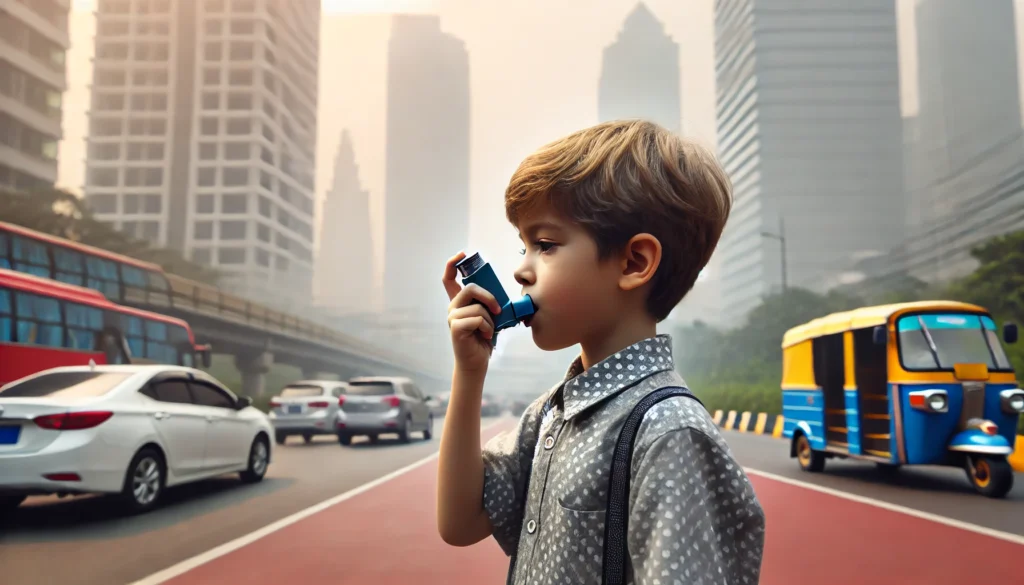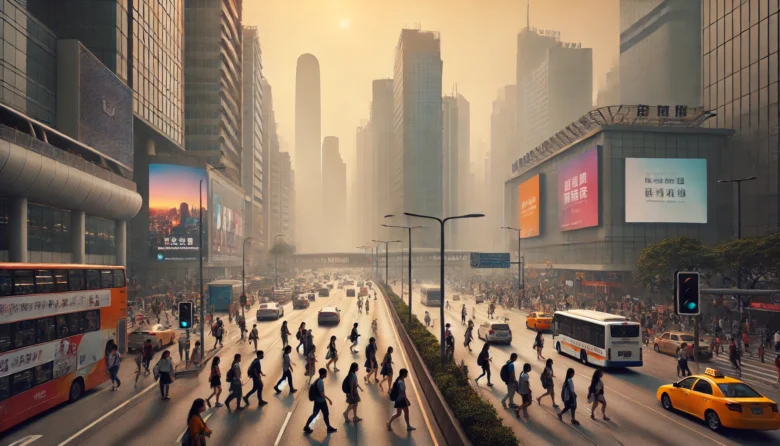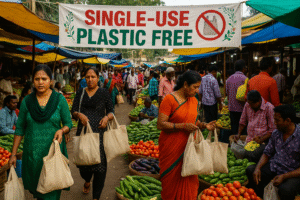Did you know that air pollution is responsible for around 7 million deaths worldwide each year?
Imagine taking a deep breath only to realize that the air you’re breathing could be doing more harm than good. Air pollution, one of the biggest environmental hazards today, is often invisible but has very real and visible impacts on public health. Whether it’s respiratory issues, cardiovascular diseases, or even mental health problems, air pollution affects everyone. Let’s dive deeper into how this invisible villain affects our health and what can be done to protect ourselves and our communities.
What is Air Pollution?
At its core, air pollution is the presence of harmful substances in the atmosphere. These pollutants can be gases, particulates, or even biological molecules. The main culprits include nitrogen dioxide (NO₂), sulfur dioxide (SO₂), carbon monoxide (CO), ground-level ozone (O₃), and particulate matter (PM). These are byproducts of vehicles, industries, construction activities, and even household items like paints and cleaners.
According to the World Health Organization (WHO), almost 91% of the world’s population lives in areas where air quality levels exceed WHO limits. But what does this mean for our health?
How Air Pollution Impacts Our Health
Respiratory Issues and Asthma Attacks
One of the most direct effects of air pollution is on the lungs. Fine particulate matter (PM2.5) and ground-level ozone (O₃) can easily penetrate the respiratory system. Exposure to high levels of PM2.5 is particularly dangerous, as these tiny particles can lodge deep in the lungs, causing inflammation and exacerbating conditions like asthma, bronchitis, and other chronic respiratory illnesses.
Example: Take the case of 10-year-old Ravi from Delhi. Ravi has asthma, and during winter, when air quality drops, his condition worsens. His mother noticed he uses his inhaler more often and has to stay indoors because even a short walk can trigger an asthma attack. Sadly, Ravi’s story is shared by many children in urban areas, where air pollution peaks seasonally.

Heart Disease and Stroke
Many people don’t realize that air pollution affects not just the lungs but also the heart. Pollutants such as carbon monoxide and particulate matter can infiltrate the bloodstream, promoting plaque formation in the arteries and increasing the risk of cardiovascular diseases. Studies have shown a correlation between high pollution levels and increased rates of heart attacks and strokes.
Case Study: In cities like Beijing, a study revealed that cardiovascular disease rates increased by over 20% due to prolonged exposure to air pollution. It’s not just about coughing or breathing problems—pollution is taking a toll on hearts, sometimes in ways we don’t immediately notice.
Mental Health Impacts
Recent research has shown that air pollution can even impact mental health, particularly in children and the elderly. Pollutants like NO₂ and PM can reach the brain through the bloodstream, potentially causing inflammation and even triggering mental health issues like anxiety, depression, and cognitive decline.
A study conducted by a team from University College London (UCL) found that people living in polluted areas showed higher levels of psychological distress than those in cleaner environments. This raises a crucial question: Are we sacrificing our mental well-being by ignoring the air quality around us?
Pregnancy and Infant Health
The dangers of air pollution are even greater for expecting mothers and their unborn children. Studies have shown that exposure to high levels of pollution during pregnancy is linked to preterm births, low birth weights, and developmental issues in children. Certain pollutants can cross the placental barrier, impacting fetal development and leaving long-lasting effects on a child’s health.
Shorter Lifespans
For people living in highly polluted areas, the cumulative effects of exposure can result in a shorter life expectancy. According to a study published by the University of Chicago’s Energy Policy Institute, individuals in some parts of the world are losing up to two years of life expectancy due to poor air quality.
Who’s Most at Risk?
Air pollution affects everyone, but certain groups are more vulnerable than others. Older adults, children, and individuals with existing health conditions like asthma or heart disease face a higher risk of experiencing health complications due to pollution. Additionally, individuals living in densely populated urban areas or near factories and industrial zones face an increased risk.
What Can We Do to Combat Air Pollution?
Policy and Regulations
Governments play a crucial role in regulating pollution. Policies that enforce stricter emission standards for vehicles, promote renewable energy, and reduce industrial pollution can make a big difference. Countries like Sweden and Norway have made great strides by investing in clean energy, showing us that change is possible.
Community Initiatives and Awareness
Communities can play an active role in raising awareness about air pollution and taking local action. Simple steps like organizing tree-planting drives, promoting cycling over driving, and educating people about the effects of air pollution can contribute to cleaner air.
Personal Protective Measures
While governments and communities work on larger solutions, individuals can also protect themselves by wearing masks, using air purifiers indoors, and monitoring air quality indexes (AQI) before stepping out.
Conclusion
Air pollution is more than just an environmental issue; it’s a direct threat to public health. From respiratory issues and heart diseases to mental health and shorter lifespans, the effects of polluted air are extensive and impactful. As individuals, we can make conscious choices to reduce our carbon footprint and push for better policies. As communities, we can work together for cleaner, healthier air.
In the end, breathing clean air isn’t just a luxury—it’s a fundamental right. Let’s take the necessary steps today to protect this right for ourselves and future generations.
Author’s Note:
Thank you for taking the time to understand the impacts of air pollution on health. Awareness is the first step toward change, and with collective effort, we can make a meaningful impact. Remember, a cleaner environment means healthier lives for all.
G.C., Ecosociosphere contributor.
References and Further Reading:
- World Health Organization – Air Pollution
- Meersens | Air and Covid-19: are we in danger?. https://meersens.com/air-and-covid-19-are-we-in-danger/?lang=en
- Son, S., & Elkamhawy, A. (2022). Active Soil Filter System for Indoor Air Purification in School Classrooms. International Journal of Environmental Research and Public Health, 19(23), 15666.
- IoT Steps Up for Water Quality and Air Pollution – RTInsights. https://www.rtinsights.com/the-internet-of-things-steps-up-for-water-quality-and-air-pollution/
- Air Pollution: The Invisible Threat to Our Health and Environment – Sustainable Living. https://www.environmentalconsortium.org/air-pollution-the-invisible-threat-to-our-health-and-environment/
- What are Carbon Emissions? – Causeartist. https://causeartist.com/carbon-emissions/





Comments
I do not even know how I ended up here but I thought this post was great I do not know who you are but certainly youre going to a famous blogger if you are not already Cheers
“This article is really informative and well-written!”